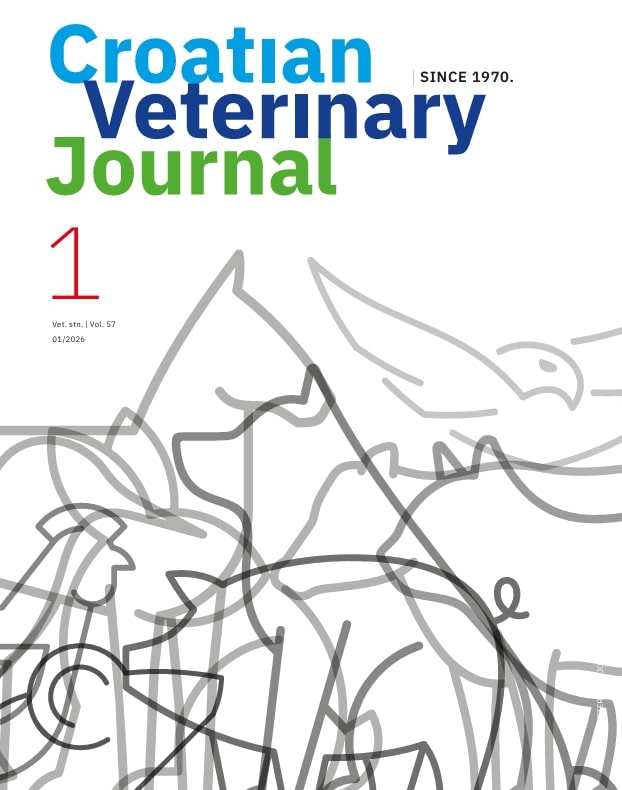Evaluation of greater wax moth (Galleria mellonella) larvae as an alternate host to study the virulence of Vibrio harveyi
DOI:
https://doi.org/10.46419/cvj.57.1.3Keywords:
alternate model, Croatian Adriatic Sea, Galleria mellonella, Vibrio harveyi, vibriosisAbstract
This study evaluated the suitability of Galleria mellonella larvae as an alternative model for investigating the virulence of Vibrio harveyi, a significant fish pathogen in marine aquaculture. Traditional vertebrate models for studying aquatic pathogens are costly, raise ethical concerns, and are subject to regulatory restrictions. In contrast, G. mellonella larvae offer advantages such as low cost, minimal infrastructure requirements, rapid infection cycles, and greater ethical acceptability. Larvae were injected with V. harveyi suspensions, supernatants, or heat-killed bacteria, and survival rates were monitored. No mortality was observed in control groups or larvae injected with heat-killed bacteria, confirming that viable bacteria are necessary for pathogenic effects. Survival rates of larvae inoculated with bacterial supernatants at $1 \times 10^9$ cfu/mL were strain-dependent but relatively high, with a range of $86.67-93.33\%$ at 168 h. The strain FR-5 exhibited no apparent pathogenicity in larvae. These findings suggest that G. mellonella may not be a reliable alternate host for studying V. harveyi infections, underlining the need to validate the suitability of alternate hosts in the study of the virulence of specific pathogenic species.
Published
Issue
Section
License
Copyright (c) 2025 Croatian Veterinary Journal

This work is licensed under a Creative Commons Attribution 4.0 International License.
You are free to:
Share — copy and redistribute the material in any medium or format for any purpose, even commercially.
Adapt — remix, transform, and build upon the material for any purpose, even commercially.
The licensor cannot revoke these freedoms as long as you follow the license terms.
Under the following terms:
Attribution — You must give appropriate credit , provide a link to the license, and indicate if changes were made . You may do so in any reasonable manner, but not in any way that suggests the licensor endorses you or your use.
No additional restrictions — You may not apply legal terms or technological measures that legally restrict others from doing anything the license permits.

